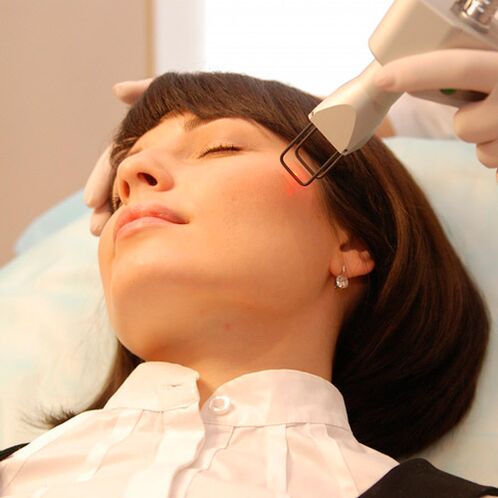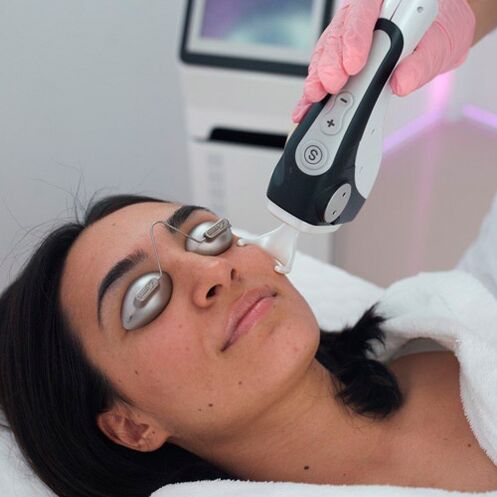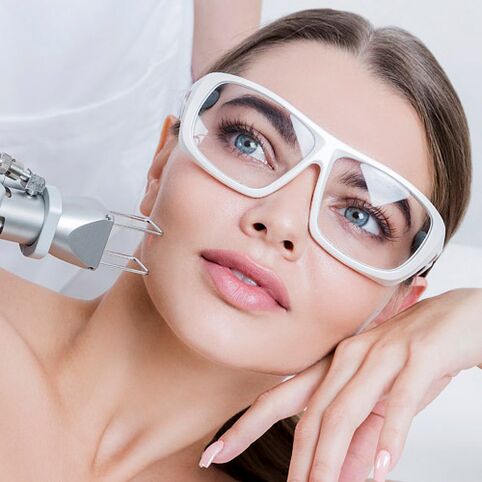Fractional laser rejuvenation- cosmetology procedures, in which the skin is exposed to an array of lasers made of microbes. The purpose of this effect is to activate the process of regeneration and collagenogenesis. This is a relatively new hardware technique, but already very popular. In other words, it is called fraxel, fractional laser resurfacing or photothermolysis.

Principles of operation and types of fractional laser rejuvenation
How do Fractional Lasers Work? The micro -rays emitted by the apparatus cause a heat shock, in response to which the "lazy" skin cells begin to function more actively. To repair damaged areas, they divide faster. Old cells that turn out to be dysfunctional die, giving way to the young. Heating of the inner layer of the skin is accompanied by partial denaturation of proteins, as well as the formation of new components of the extracellular matrix, including elastin and collagen.
The depth of effect is differentiatedablative and non -ablative laser rejuvenation. . . The first is superficial and resembles grinding. Laser treatment of the upper layers of the skin is accompanied by evaporation of moisture, damage to the epidermis. After healing, the skin becomes firmer, the relief and color is smoothed out. During non -ablative photermolysis, the laser acts on the deep layers of the skin. In this case, no open wounds were formed.
Each type of rejuvenation has its advantages and minutes. Therefore, the effect of ablative laser reabsorption can be seen after the first procedure. By using this method, you can get rid of wrinkles and deep age spots, post-acne, stretch marks, scars. With non-ablative procedures, there is no risk of infection, and anti-aging effects can be seen for several years. This type of photothermolysis is recommended for people under the age of 40, with the first signs of aging: fine wrinkles, reduced turgor.

Instructions and contraindications for the procedure
You should use a photothermolysis procedure if you have:
- Soft, sagging skin.
- Fine and deep wrinkles, crow's feet.
- Pigmentation of any origin.
- Increased sebum secretion.
- Enlarged pores, prone to acne.
- Scars, stretch marks, after acne.
- "Asterisk" vascular (rosacea).
- Dull skin.

Contraindications to fractional laser rejuvenation are:
- Allergies, psoriasis.
- Autoimmune diseases.
- Pregnancy, breastfeeding.
- Blood diseases.
- Skin infections, inflammation in the intended treatment area.
- All chronic diseases at the stage of decompensation.
- Oncology.
- Increased body temperature.
- Diabetes.
- The tendency to form keloid scars.
- Epilepsy.

Laser rejuvenation properties
Preparation for the fractional photermolysis procedure was by refusing to visit the solarium and the beach for two weeks. During this time, you also can not clean the skin, do chemical peels, take sulfonamides, fluoroquinolones, tetracyclines. Three days before the procedure, they stopped going to the pool, bathroom, sauna, treating exposed areas with cosmetics containing alcohol. To avoid complications, a cosmetologist may prescribe antiviral and antibacterial medications for this period. The day before the procedure should be carried out without alcohol and cigarettes, do not go to the gym.
Before the laser treatment, the skin is cleansed of cosmetics and impurities. In general, the laser effect is felt as an unpleasant tingling sensation, but sometimes pain is required. In this case, the beautician applies an anesthetic on the finished skin area. Once the ointment worked, she continued to treat the skin with a laser. The duration of the procedure depends on the area of the treatment area and ranges from a few minutes to an hour. Finally, the skin is cooled with a nourishing cream.
The first few days after the procedure, you should not use alcohol-based products, compressing the part of the body where photothermolysis is performed, with compression linen. It is recommended to exclude physical activity for a week, visit the pool, sauna or bath, limit the time spent on the street. The skin is moisturized with a special cream three times a day. And for half a month. It is undesirable to do exfoliation, using cosmetics with retinol, salicylic acid. For two months, it is necessary to use a cream with a sun protection factor of 35 or more.

How many procedures do you need to achieve the result? What effects can you expect?
The recovery period after laser fractional rejuvenation lasts from 3 to 7 days. The speed of recovery depends a lot on lifestyle. Alcohol intake, smoking, excessive activity, unbalanced diet, insomnia and anxiety - all of these can slow down the regrowth process.
The first three days after laser exposure, redness of the skin and slight swelling can be seen. Anesthetics and skin cooling can help reduce discomfort. It is normal if the skin tightness is felt within a week, there are unstable areas. A side effect of this procedure is a bronze color, which disappears on its own after half a month.
Lasting results after fractional photermolysis occur after 2–5 procedures. More specifically, the number of sessions can only be determined by a beautician, based on preliminary data. The interval between procedures is 3-4 weeks. As a result of fractional laser rejuvenation, the aging process is inhibited: wrinkles disappear or become less noticeable, turgor increases, pore severity decreases, and skin improves. This method is an effective tool in combating scars, pigmentation, post -acne, stretch marks.
Fractional laser rejuvenation is one of the three most popular hardware cosmetic procedures. Its advantages include efficiency, short healing period, physiology. The results can be seen after the first procedure and last up to three years. This method has various clues. It is possible to choose the depth of laser exposure.
























